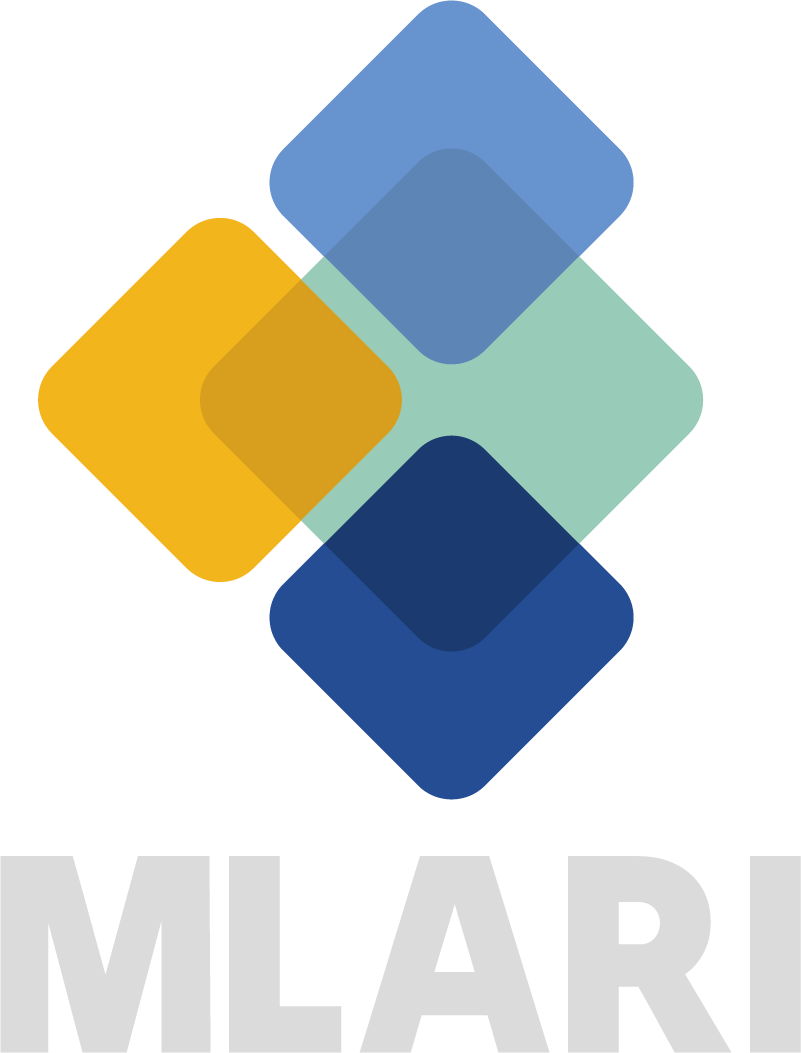Leadership and Uvalde A Case Study
PUBLISHED:
Much analysis has been done of the mass shooting on 5/24/22 at Robb Elementary School in Uvalde, Texas. I will examine the incident from a leadership perspective. My experiences that might make my opinions worthwhile are:
- Retired police officer, police supervisor and manager of 32 years
- Police trainer for the last 30 years
- UCLA graduate with a doctor of education in leadership degree
- Graduate school professor of leadership for the last thirteen years
- Peter F. Drucker researcher at the Management as a Liberal Art Research Institute (MLARI) at the California Institute of Advanced Management (CIAM), for the last 5 years
There are four areas that would help explain the Uvalde law enforcement response to this incident. They are:
- Basic police academy training
- Fear
- Bystander Effect, particularly Diffusion of Responsibility, and
- Leadership and Autonomy
I will weigh in on each of these, and I will save what I feel is the most important, a lack of autonomy, for last.
BASIC POLICE ACADEMY TRAINING
I graduated from the Los Angeles County Sheriff’s Academy in 1970 and I still train academy recruits at the Simon Wiesenthal Center Museum of Tolerance, where most police academies in California send their recruits for a day-long workshop on tolerance. The amount of knowledge the academy imparted on us recruits was impressive. However, my most vivid memory of the academy is that there was a strong focus on officer safety. We were told that out first priority was to go home to our families every night. A lot of the curriculum centered on police officer killings, including photographs of dead police officers. The purpose of this was obviously to reduce the number of police officers killed by scaring us into being more cautious. As far as I can tell from interacting with new recruits, this focus on officer safety is still in effect. It probably saves police officer lives, but, at least in my case, it made me less likely to put myself in danger. I don’t know if this is a good thing or a bad thing, but I think recruits should be told that there may be times when officer safety comes in second to saving innocent victims’ lives.
On August 15, 2022, I spoke with a current police academy instructor from a large police academy. I asked if there was still a large focus on officer safety. The answer I got was “yes and no; the phrase, …first priority was to go home every night… is still used. However the academy also teaches active shooter protocols; that is, …at the scene of a mass shooting officers will advance into the site of any ongoing shooting and act to neutralize the shooter as quickly as possible.” The instructor I spoke to added that they know a police sergeant who does in-service training (training of veteran officers) who tells officers, “If your first priority is to go home at night, look for another job.”
FEAR
Police officers are human. They react to fear pretty much the same way everybody else does. What would you feel and what would you do if you were asked to confront someone who is armed with one of the deadliest weapons ever devised (commonly known as the AR15) and who has just killed numerous innocent people? Needless to say, the average person would quickly decline for fear of being killed. Police officers have very similar feelings. But police officers have a lot things going for them that should help mitigate their fear compared to the average citizen. Police officers usually have those same AR15-type weapons, training, almost unlimited backup, and hopefully a lot of experience. In case you were wondering, the bullet proof vest will not stop a bullet fired from an AR15-type rifle.
Personally, I would think back to those lessons at the police academy that I have a responsibility to go home to my family after work. Theoretically, police officers don’t have the luxury of declining to go in after this crazed killer. I’ll explain this later.
BYSTANDER EFFECT/DIFFUSION OF RESPONSIBILITY
And now a discussion of a very close cousin of fear— the bystander effect.
The bystander effect refers to the well-documented fact that at any incident, event or scene where bad things are happening, the huge majority of people choose to be bystanders. They simply watch instead of doing something to help the people being victimized. In 1964 a young woman named Kitty Genovese in Queens, New York was murdered. She was coming home to her apartment and was stabbed numerous times with a knife. Even though the murder took place over several minutes just outside her apartment in view of her neighbors, no one did anything to try to stop the attack. In fact, it was later determined that 37 of her neighbors saw the attack and none of them even called the police.
The Genovese case drew international attention and has been studied by social scientists in hundreds of experiments. A particularly powerful part of the bystander effect is diffusion of responsibility (Rentschler 2016), which has been defined as:
When a person notices a situation and defines it as requiring
assistance, he or she must then decide if the responsibility to help
falls on his or her shoulders… Diffusion of responsibility refers to
the fact that as the number of bystanders increases, the personal
responsibility that an individual bystander feels decreases. As a
consequence, so does his or her tendency to help (Brittanica).
In other words, “Why should I place myself in danger by doing something when some of these other people will probably do something.” Very shortly after the shooting at Robb Elementary School started there were dozens of police officers at the scene, including the Uvalde School District Chief of Police, Peter Arredondo. It looked like most of them were waiting and wishing someone would do something (Sanderson 2020). Albert Einstein said, “The world is a dangerous place, not because of those who do evil, but because of those who look on and do nothing” (Einstein). And bystanders who are in positions of power (such as Chief Arredondo) are especially dangerous because other people look to them as models. Their lack of action encourages and gives permission to others to be bystanders.
How many people at Robb Elementary looked at Arredondo and were emboldened to be bystanders? I would like to add another phrase to the end of Einstein’s quote; that is, “especially if they are a person in a position of power” (I use “person in a position of power” because according to Dr. Kotter of Harvard Business School, just because someone has a title doesn’t make them a leader. They have to earn the title of leader by their actions) (Kotter 2001). A leader and a bystander are two diametrically opposed positions. A leader is the opposite of a bystander (Cory and Cory 2021, Katz 2016). A leader, by definition, takes action. A bystander, by definition, stands by and watches. In the words of Peter Drucker, writing on the definition of leadership, “Wishing won’t make it so; doing will” (Drucker 1954, p.160).
It’s important to note that in April 1999 at Columbine High School in Colorado a mass shooting occurred (15 people were killed). At that time police officers who arrived at the scene waited for the Special Weapons and Tactics team (SWAT) to assemble and come to the scene to deal with the shooters. In 1999 this was the police culture; that is, confronting mass shooters was the domain of specially trained SWAT teams. Since Columbine, police departments have acknowledged that not taking immediate action to neutralize the shooter at a mass shooting increases the likelihood that more people will die. Therefore, policies were universally enacted by police departments to change this culture/tactic; that is, the first officers at the scene of a mass shooting will advance into the site of any ongoing shooting and act to neutralize the shooter as quickly as possible (YOYO Response 2020). This is commonly called the Immediate Action Rapid Deployment (IARD) tactic (IARD 2022).
This change in culture/tactics was huge. It made being a police officer even more dangerous. And keep in mind that, even a small cultural change is difficult and time consuming (Schein 2016). So, this recent (22 years ago) major change in police culture coupled with the bystander effect made it easier for police officers to consciously or sub-consciously succumb to their fears and do what we saw the first officers on the scene at Robb Elementary School do—basically nothing. I suspect that most of these officers looked around and thought something like, “With all these officers here, I’m sure someone is going to do something…soon.”
LEADERSHIP AND AUTONOMY
This brings us to leadership and autonomy which, I think, is the most important factor that would lead to better law enforcement responses to mass shootings. One of the earliest uses of autonomy in leadership is from Peter Drucker in his 1954 book, The Practice of Management. Drucker described a management strategy he named Management by Objectives (MBO). This strategy was radical for its time in that it suggested, among other things, that management should share responsibility with the employee for deciding how the employee should do their job. In other words, giving the employee autonomy. Today MBO is widely used in various forms (Staunstrub 2022). According to Exchange Leadership, MBO was being used by 79% of Fortune 1000 companies in 2008 (Curtin 2022, Sung et. al., 2022) and others have found that management by objectives positively affects employee engagement and meaningfulness.
Perhaps the best description of leaders using autonomy to motivate employees is from Daniel Pink in his New York Times bestselling book, Drive (Pink 2009). Pink makes the case that one of the most effective ways to motivate people is by giving them as much autonomy as possible. People who get to make their own decisions as to how they are going to do their jobs, will do a much better job. They will be more engaged and prouder of their accomplishment. Lao Tzu said, “Of the best of leaders, when the task is done, the people say, ‘We did it ourselves” (Heider 1997). Conversely, if people are told what to do and how to do it, they will probably comply, but they will not be committed and will only do the minimum required.
A new study (Maran et al. 2022) concurs with Pink on the effect of autonomy on job engagement. They posit that employees, given a high degree of autonomy, are more engaged, higher performers, and better decision makers. When employees are given autonomy, once vision is set, they develop a clearer understand of their goals, and align their decisions with the organization’s vision and goals. And just getting to practice making decisions makes them better decision makers: “This granting autonomy acts as a vitamin for goal achievement” (p. 147).
The Texas House of Representatives Investigative Report on the Robb Elementary Shooting report was published on July 17, 2022 (Texas House of Representatives Investigative Report on the Robb Elementary Shooting 2022). The report cites numerous failures and mistakes by numerous people. This paper will point out only the failures of leadership cited in the report. The report noted several high-ranking law enforcement personnel who exhibited a shocking lack of leadership. It reported that among the first law enforcement people to arrive at Robb Elementary were Uvalde School District Chief of Police, Peter Arredondo; Uvalde Police Department Acting Chief of Police, Lt. Mariano Pargas; and Uvalde Police Department SWAT Commander, Staff Sgt. Canales. Lt. Pargas told the committee that he and Chief Arredondo never communicated with each other. Staff Sgt. Canales was one of three officers seen in surveillance video approaching the door to classroom 112, where the shooter was. When the shooter shot through the wall the three officers ran away. This was at 11:37 AM. It was 12:50 PM when a U.S. Border Patrol Tactical Team (BORTAC) made entry and confronted the shooter. As Staff Sgt. Canales was exiting the building he was heard to say, “we got to get in there” (p.58). He then helped other officers evacuating children from other classrooms. Cable News Network (CNN) aired a special on August 7, 2022, What Really Happened in Uvalde (CNN 2022). It showed Texas Governor Gregory Abbott at a news conference 24 hours after the shooting saying the law enforcement officers at Uvalde saved lives by running towards the gunfire. There was also video of Staff Sergeant Canales and two other officers running away from classroom 112 when the shooter shot through the wall.
The report states that “The general consensus of witnesses interviewed by the Committee was that officers on the scene assumed that Chief Arredondo was in charge or that they could not tell that anyone was in charge of a scene described by several witnesses as chaos and a ‘cluster’.”
INTERVIEW WITH CHIEF JACQUELINE SEABROOKS
On 7/30/22 I interviewed retired police chief, Jacqueline Seabrooks. The police department she was chief of at the time had a mass shooting in 2013 (CNN 2013), that by all accounts, even though 5 people died, was a hugely successful law enforcement response. This shooting started at a residential house in the city and ended at the local community college. During her 37-year career Seabrooks was police chief of two different medium size Southern California police departments. She retired from the department where the mass shooting occurred and was chief of the other department for five years. Due to a disastrous law enforcement response to some civil unrest and mass looting in May 2020 (Los Angeles Magazine 2020) she was asked to return to that department where the mass shooting occurred as interim chief for a year.
The questions I asked Seabrooks about her experiences of being the Chief of Police and having the ultimate responsibility for a successful law enforcement response to a mass shooting were: (1) What about your and your staff’s leadership helped make the response to this incident so successful? and (2) What did you learn about leadership from your involvement in this incident?
Seabrooks mentioned the nationally used Incident Command System (ICS) (ICS 2022) that was immediately put into place when the incident started. This system facilitated several organizations to seamlessly work together under a single command structure. Seabrooks cited an interaction she had with a captain from her department who, in accordance with the ICS system, had declared himself the Incident Commander. (She said that every member of her department is regularly and thoroughly trained in ICS.) She arrived at the incident command post and the captain asked her if she was assuming command. After getting a quick briefing on the situation, she replied, “Certainly not, carry on.” In other words, Seabrooks reinforced in this person that he had the autonomy to continue making decisions about the incident. She was telling him that she trusted him and his competence to do what was needed to successfully carry out their mission. She told me that the people carrying out the mission did not need her sticking her nose into everything. She said that leadership is giving her people what they need, staying out of their way, and being available if they have any questions. Seabrooks said that as a leader she believes that hiring the right people and then trusting them to effectively do their jobs makes for engaged and committed employees at all levels, who are not afraid to lead and make decisions. She said that it appeared that members of law enforcement in Uvalde were not talked about as leaders or told that everyone in an organization can and should be a leader.
For many years Seabrooks had been inviting the (much smaller) college police department to join the city police department in whatever training they were doing. This made for good relationships and cooperation between the two police departments. So, when it came down to having two city police officers and one college police officer being in the right place at the right time to engage the shooter, they quickly formed a team and neutralized the shooter, thereby saving uncountable lives. They didn’t need to ask for permission; they just did their job. Seabrooks said, “What they did was the opposite of just following orders.” Seabrooks also talked about complacency, the “It can’t happen here” attitude, and the idea that you don’t need a title to be a leader. She has always tried to send a message to employees that, in police work, mental preparedness is just as important as physical preparedness. And every employee should be mentally prepared to take charge of a scene at any time. As a police administrator she has had regular dialogues with subordinates about the fact that police officers are human and there are officers who might freeze up or not commit to putting their lives in jeopardy to save innocent citizens’ lives. These dialogues have the effect of reminding officers of their responsibilities, confronting themselves about these responsibilities, and keeping complacency in check.
Seabrooks added that a very important part of leadership is also, to keep an eye on the police officers for the foreseeable future, who shot the suspect for symptoms of post-traumatic stress disorder (PTSD) (Garrett 2006).
CONCLUSIONS
Historically, law enforcement agencies are conservative and hesitant to move away from command-and-control leadership and towards giving employees more autonomy. However, my experience is that they are slowly becoming more open to the more progressive styles of leadership. A leadership program that was started by the California Commission on Police Officer Standards and Training in 1989, the Sherman Block Supervisory Leadership Institute (SBSLI) is very progressive and has trained several thousand front line supervisors from every law enforcement agency in California.
Maybe the Uvalde event is the impetus for law enforcement people in positions of power to start embracing empowerment; hiring and promoting the right people, giving guidance, goals, and vision, and encouraging officers to make as many decisions as possible.
The first officers on the scene at Uvalde didn’t seem to think of themselves as leaders. If they did, they would have made the decision, without being told, to do something. In watching video on the incident, I would call many of these officers unengaged. The reality is that everyone, no matter their title or position, influences other people and is therefore a leader (Sanborn 2006). Everyone should be encouraged to practice being better leaders by honing and practicing their leadership skills.
For current people in positions of power in law enforcement who are concerned about losing power or feeling unneeded, or “having the inmates run the asylum” Matthew Barzun, former ambassador to the United Kingdom and Sweden, has some advice. He makes a very convincing case that by giving employees more autonomy/power, you are saying to them, “I care for you, trust you, and want you to succeed.” This helps in building a trusting, caring relationship between employee and supervisor and therefore will result in more influence (personal power) and engagement for both employee and supervisor (Barzun 2021).
Peter Arredondo, Uvalde School District Police Chief, was a bystander at the school. The Uvalde shooting might have turned out differently if Arredondo had realized that he was one of those law enforcement officers who would not commit to risking his life to save innocent people, so he should have just stayed away. The report, of course, points out that since the 1999 Columbine tragedy all police officers must be willing to risk their lives without hesitation. And at the Uvalde shooting police officers failed to adhere to their active shooter training. It is unknown if Uvalde police superiors regularly reinforced this training. The Uvalde School District Chief of Police, who was inside the school failed to assume command or to assign anyone else to take command. And, only after 77 minutes did anyone exercise leadership; at that time members of the U.S. Border Patrol Tactical Team entered the classroom where the shooter was. The report seems to place blame for the lack of leadership on all Uvalde law enforcement personnel. “The entirety of law enforcement and its training, preparation, and response shares systemic responsibility for the many missed opportunities on that tragic day” (p.7).
RECOMMENDATIONS
- The bystander effect is real and needs to be a subject of regular training for all law enforcement personnel.
- Hiring and promotional testing should be about finding leaders, not charismatic people. Demagogues are charismatic. Leaders act with integrity. (Drucker 1964 p.159). The hiring and promotional processes should also take into account whether or not the potential candidates are sure that they can prioritize the lives of innocent citizens over their safety and the safety of their subordinates.
- Officer safety is not what it used to be. Police academies need to stress to recruits that starting in 1999 there was a major change in policing policy. Police officers now need to manage their fear and prioritize the lives of innocent citizens over their own safety.
- All members of law enforcement should take note that Uvalde law enforcement and the Uvalde School District was a victim of complacency (“It can’t happen here.”) Regular communication and dialogue are the best way to ensure that complacency will not take hold of your organization.
- It seems that when an organization is being examined or evaluated, the cliché, “poor communications” always seems to come up. The Uvalde shooting was clearly a case of disastrous communications or lack of communicating altogether, especially from people in positions of power. Every organization can use more practice/training in improving communication.
References
Anonymous, The YOYO Response, Police Vol.44 Iss.8 Aug. 2020
Barzun, Matthew, The Power of Giving Power Away: How the Best Leaders Learn to Let Go.
Penguin Random House, New York 2021
Britannica, Diffusion of Responsibility
https://www.britannica.com/topic/bystander-effect/Diffusion-of-responsibility
Curtin, Joseph, Using Management by Objectives To Improve Performance,
https://www.researchgate.net/publication/255645533_Values-
Exchange_LeadershipR_Using_Management_by_Objectives_Performance_Appraisals_t
o_Improve_Performance
Cory, David and Cory, Jill. Emotional Intelligence and the Bystander Effect: Being a Leader is the
Opposite of Being a Bystander. Webinar August 26, 2021 Emotional Intelligence
Training Company. https://www.emotionalintelligence.ca/2021/08/emotional-
intelligence-and-the-bystander-effect/
CNN, Cable News Network 2013
https://www.cnn.com/2013/06/09/justice/california-college-gunman
CNN, Cable News Network 2022
https://cnnpressroom.blogs.cnn.com/2022/08/04/anderson-cooper-360-special-report-what-really-happened-in-uvalde/
Drucker, Peter F., The Practice of Management. Harper & Row. New York 1954
Einstein, Albert. https://philosiblog.com/2011/11/29/the-world-is-a-dangerous-place-to-live-
not-because-of-the-people-who-are-evil-but-because-of-the-people-who-dont-do-
anything-about-it/
Garrett, Ronnie. Don’t Cowboy Up: Healthy Agencies Help Officers Get Out of the Saddle and
Ride the Waves of Their Emotions to Keep Stress Disorders at Bay. Law Enforcement
Technology Vol. 33, Issue 2, Feb. 2006
Heider, John, The Tao of Leadership Humanics New Age, Atlanta 1997
(IARD), Immediate Action Rapid Deployment Tactic Retriev
https://www.police1.com/police-products/wmd-equipment/ppe/articles/immediate-
action-rapid-deployment-new-rules-of-engagement-wbXig9LBrPJRnpQh/Page Break
ICS100, Incident Command System
https://www.usda.gov/sites/default/files/documents/ICS100.pdf
Katz, Jackson. The Macho Paradox: Why Some Men Hurt Women and How All Men Can Help
Sourcebooks, Inc. Naperville 2006
Kotter, John P. What Leaders Really Do. Harvard Business Review December 2001,
Los Angeles Magazine, 2022
https://www.lamag.com/citythinkblog/santa-monica-police-may-31/sions Into Results
Maran, Thomas K.;Baldegger, Urs; Klosel, Kilian, Turning Vi: Unraveling the
Distinctive Paths of Leading with Vision and Autonomy To Goal Achievement.
Leadership and Organization Development Journal Vol. 34 No. 1 2022
Pink, Daniel H, Drive: The surprising Truth About What motivates Us Penguin Group New Your
2009
Rentschler, Carrie Filmic, Witness To the 1964 Kitty Genovese Murder Urban History Vol. 43 Iss.
4 2016
Sanborn, Mark, You Don’t Need a Title to Be a Leader: how anyone, anywhere Can Make a
Positive Difference. Waterbook Press, Colorado Springs 2006
Sanderson, Catherine, The Bystander effect: The Psychology of Courage and Inaction William
Collins Publication. London 2020
Schein, Edgar and Schein, Peter, Organizational Leadership and Culture Jossey Bass. New York
2016
Staunstrup, Per A., Management. By Objectives is Still Relevant,
https://www.linkedin.com/pulse/management-objectives-still-relevant-per-aae-staunstrup/
Sung, Moon J.; Yoon, Dong-Yeol; Han, Caleb S., Does Job Autonomy Affect Job Engagement?
Social Behavior and Personality journal Vol. 50 Iss. 5 (2022)
Texas House of Representatives Investigative Committee on the Robb Elementary Shooting
Report. 2022
https://house.texas.gov/_media/pdf/committees/reports/87interim/Robb-Elementary-
Investigative-Committee-Report.pdf





